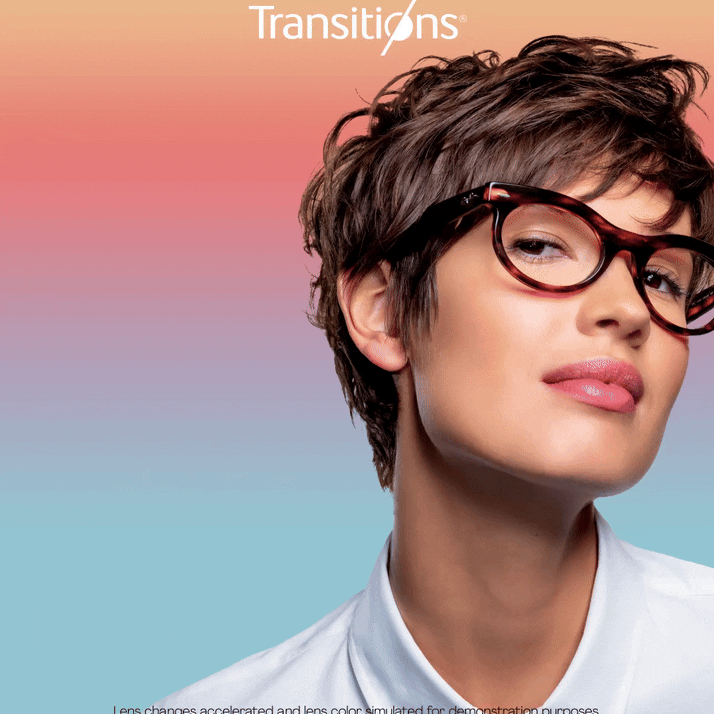Transitions® Lenses
The all-round solution for both indoor & outdoor.
Transitions Light Intelligent Lenses seamlessly adapt to changing light situations, changing from clear to dark when outdoors, and back to clear when you’re inside.

How do Photochromic Lenses Work?
When photochromic lenses are exposed to UV light, trillions of photochromic molecules in the lens begin to change structure. This reaction is what causes the lenses to darken.
All lenses that adapt to light use photochromic molecules; the superiority of Transitions® technology lies in exclusive, patented formulas. Each formula is integrated into the surface of the lens.
These molecules constantly and smoothly recalibrate so the optimal amount of light reaches your eyes whether you’re in bright sunlight, under cloud cover or indoors.

An Extraordinary Technology
The Transitions® photochromic technology becomes an integral part of the lens through one of two specialised processes.
Both methods provide the same uniform tint color, regardless of lens thickness differences caused by lens prescriptions.
Our Range of Transitions® Lenses
1. The darkest in hot temperatures & in the car, blocking 100% UVA & UVB and offering the best overall blue violet light filtration across light situations* among clear to extra dark photochromic lenses. *Filtering blue-violet light (between 400 and 455nm ISO TR 20772:2018) among polycarbonate and CR39 grey lenses with a premium anti-reflective coating.: filtering (I) up to 45% indoors at 23°C, (II) up to 64% behind the windshield (III) up to 86% outdoors at 23°C and (IV) up to 83% outdoors at 35°C.
2. Blue-violet light (between 400 and 455nm ISO TR 20772:2018)
3. Based on tests across materials on grey lenses @ 23°C, using ISO 12312-1 standard.


